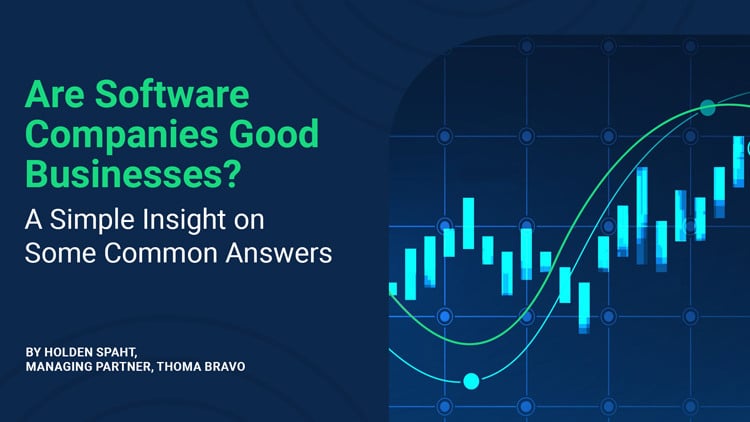Then, to get a 15% annual return on my investment, I need the company to generate 30% EBITDA margins.
In other words, for me to buy those shares for a five-year hold means placing a bet on a massive improvement in EBITDA margins. In today’s macro-environment with decelerating revenue, it’s a high bar to reach. If the company only hits a 20% EBITDA margin, that gets me a 6% annual return, which is barely above the risk-free Treasury rate.
In my experience, if you had to choose one financial metric that provides the most relevant information, it would be Gross Revenue Retention (GRR) because it reflects an amalgam of customer satisfaction, competitive positioning, and relative market share.
I find it peculiar that public companies rarely disclose GRR. Even when disclosed, the same definition is not always applied. At Thoma Bravo, we calculate GRR by subtracting downgrades and cancellations over a 12-month period from ARR at the beginning of the corresponding 12-month period for a particular customer cohort and then dividing the result by the ARR from the beginning of the same 12-month period.
In simple terms, we focus on how much revenue a company retains from its customer base over a year — before generating any incremental sales to either new or existing customers. Therefore, the closer a company is to 100 on this measure, the higher quality its revenue stream is. Said another way, high GRR means less reliance on “new bookings” and incremental customer spend to grow, and this typically leads to more predictable revenue over time.
Publicly traded companies are more likely to disclose Net Revenue Retention (NRR) than GRR, using it to speak to the strength of the relationship between the business and the customer. That’s because NRR indicates that a company’s existing customers are expanding their use of their products; they might be buying more seats, features, or other products the company offers. It’s common to hear arguments that NRR around 120% is a rough threshold that signals business strength, even as the median NRR at publicly traded SaaS companies has fallen closer to 110% over the first two quarters of 2023.
However, my concern is about over-indexing on NRR growth, especially given the volatility of NRR year-over-year. Sometimes, businesses that focus on NRR will be the same businesses with relatively low GRR –– think of a young company with multiple products in a secular growth area. If that company had relatively low “up for renewal” rates or GRR (not uncommon), it would imply massive expansion in existing customers’ purchases to sustain the NRR growth.
In my eyes, a high GRR better reflects a durable business model with more substantial long-term profit potential. GRR is a simple indication that customers renew revenue at a very high rate, the opposite of churn. That, in turn, usually means increased customer satisfaction, solid product quality, a strong market position, and pricing power –– all of which are better indicators of business fundamentals.
And those qualities are the same ones that most substantially impact a company’s long-term cash flow margin potential. As we all know, that margin potential is the basis of most investors’ valuation targets. Not having visibility into GRR then becomes a real issue, which raises the question of why investors don’t demand better, more consistent, and transparent disclosure in this area.
In this new era of demand for profitable growth, I imagine most public market investors are asking themselves two main questions about software companies:
(A) Which companies have the potential to become highly profitable businesses while sustaining their organic growth profile; and
(B) Which companies are most likely to achieve those margins?
GRR provides a great basis to begin answering Question A. Question B is more nuanced, as it takes much more than operating leverage to achieve the margins that currently underlie public market valuations.
That nuance drives us at Thoma Bravo –– because transforming “potential” into “reality” is the basis of our investment strategy.











